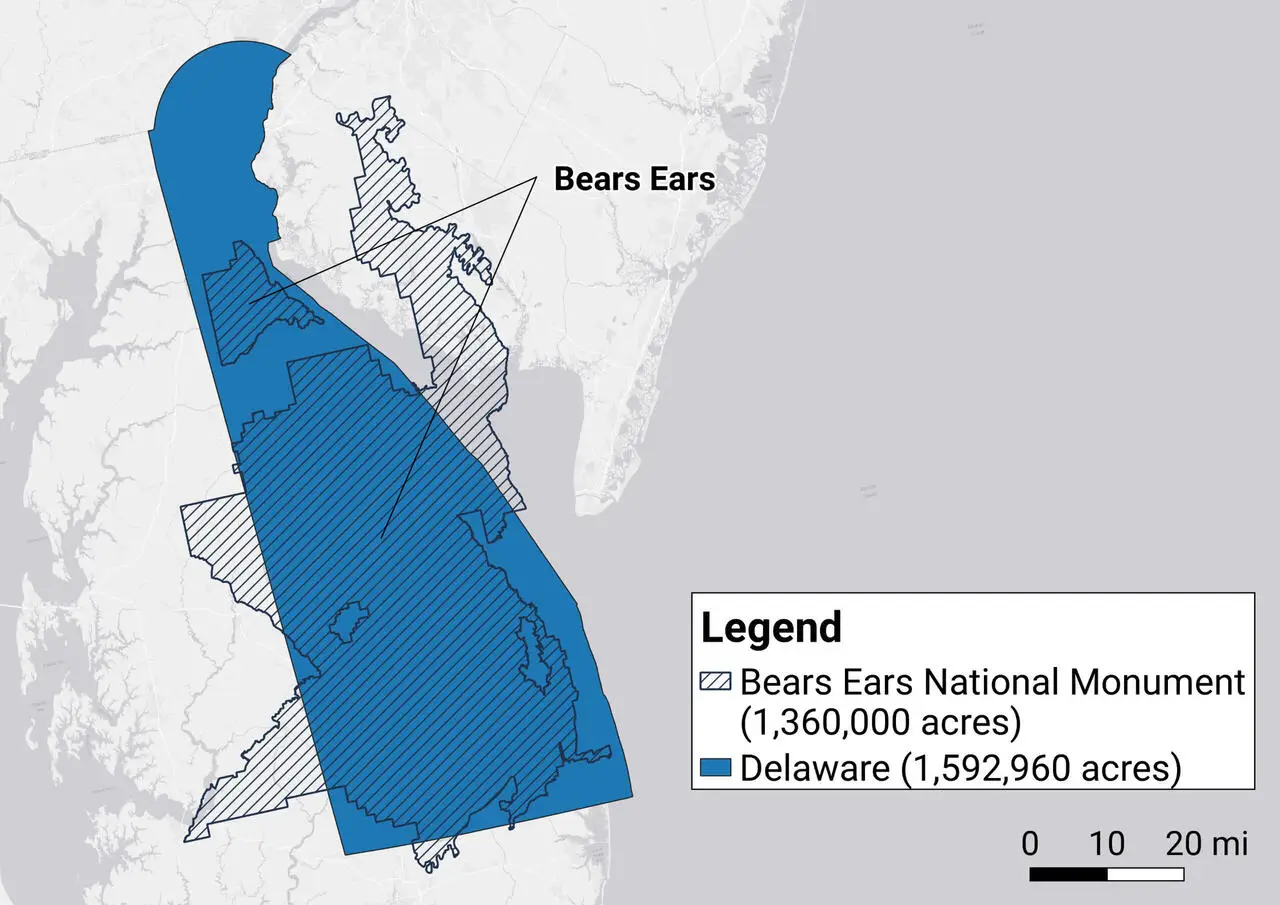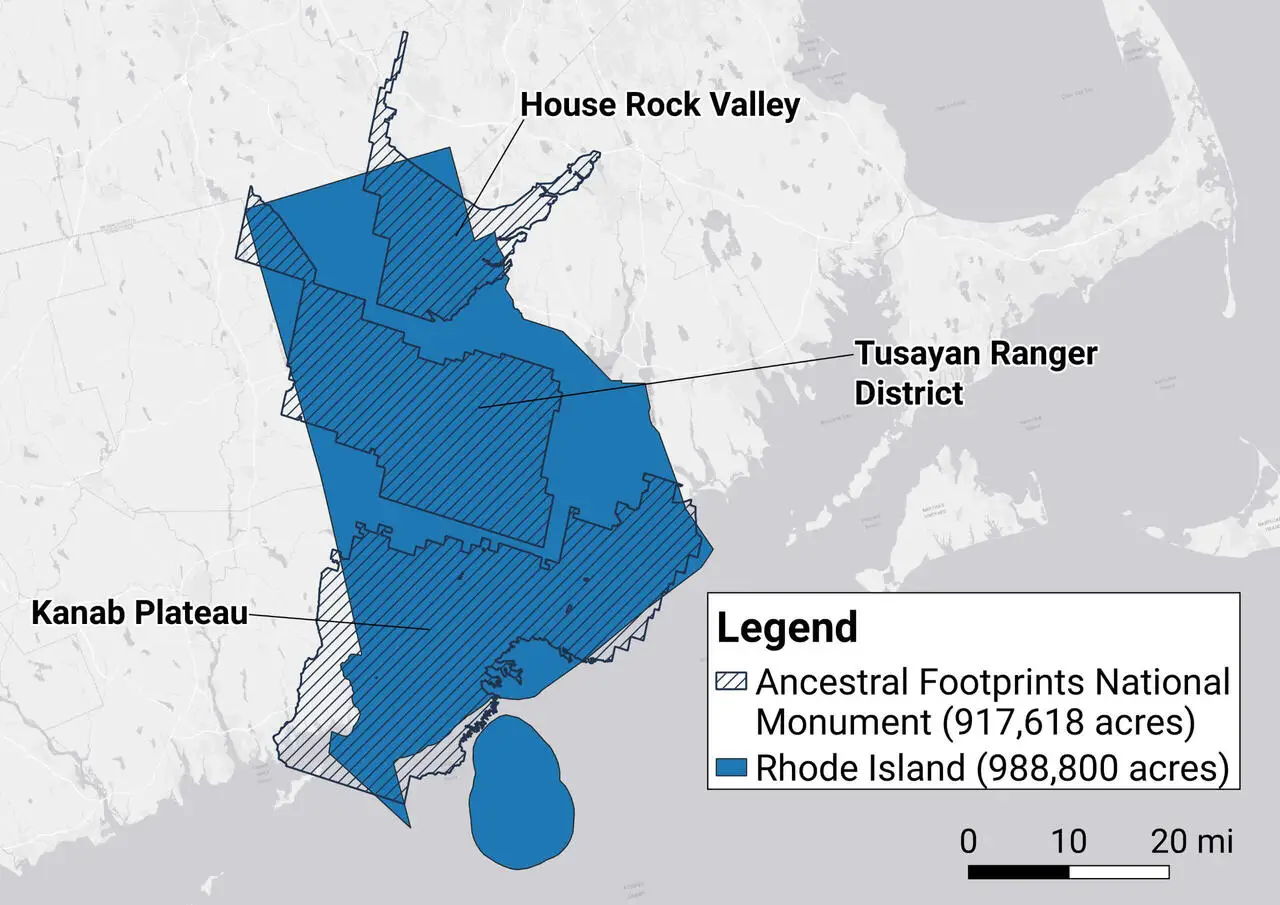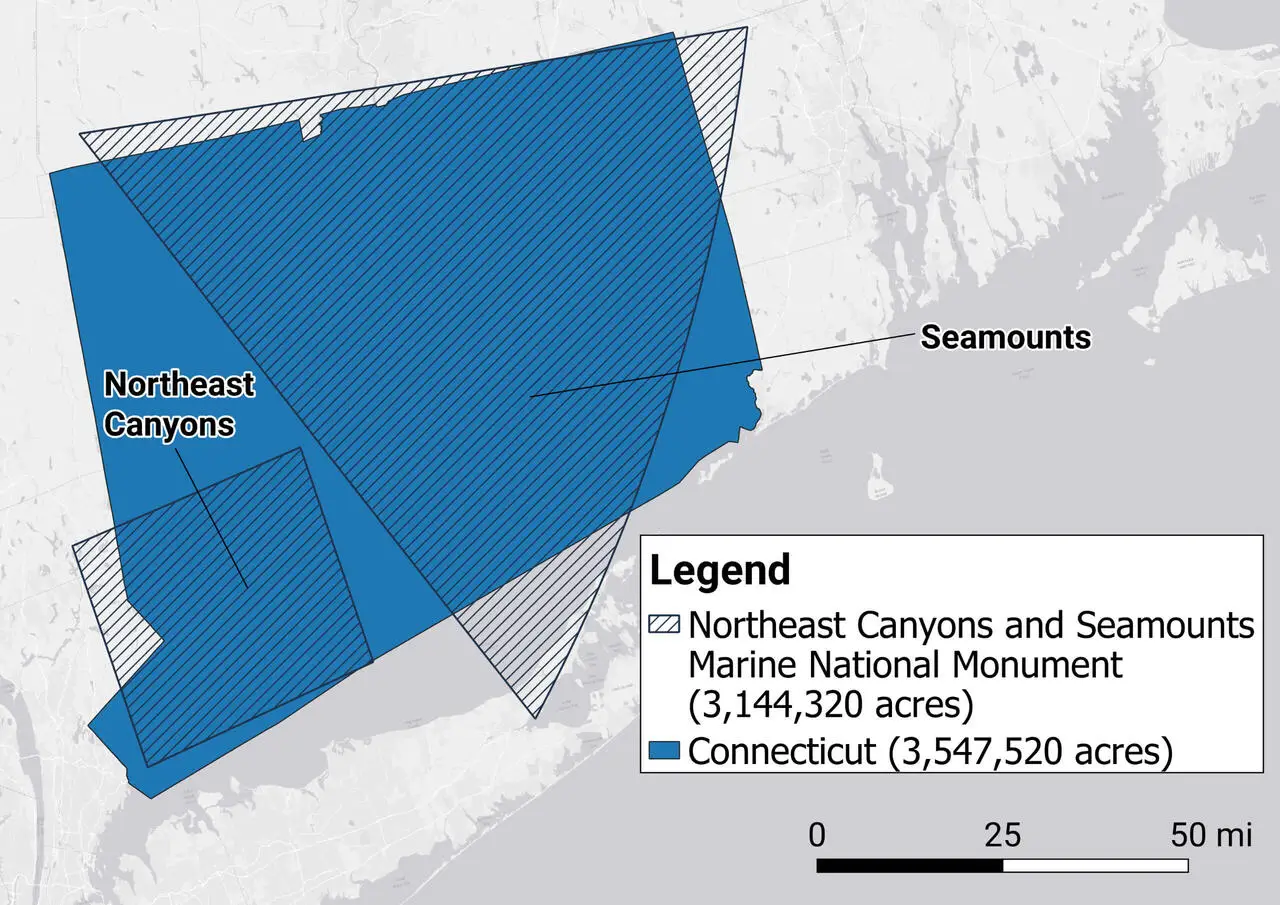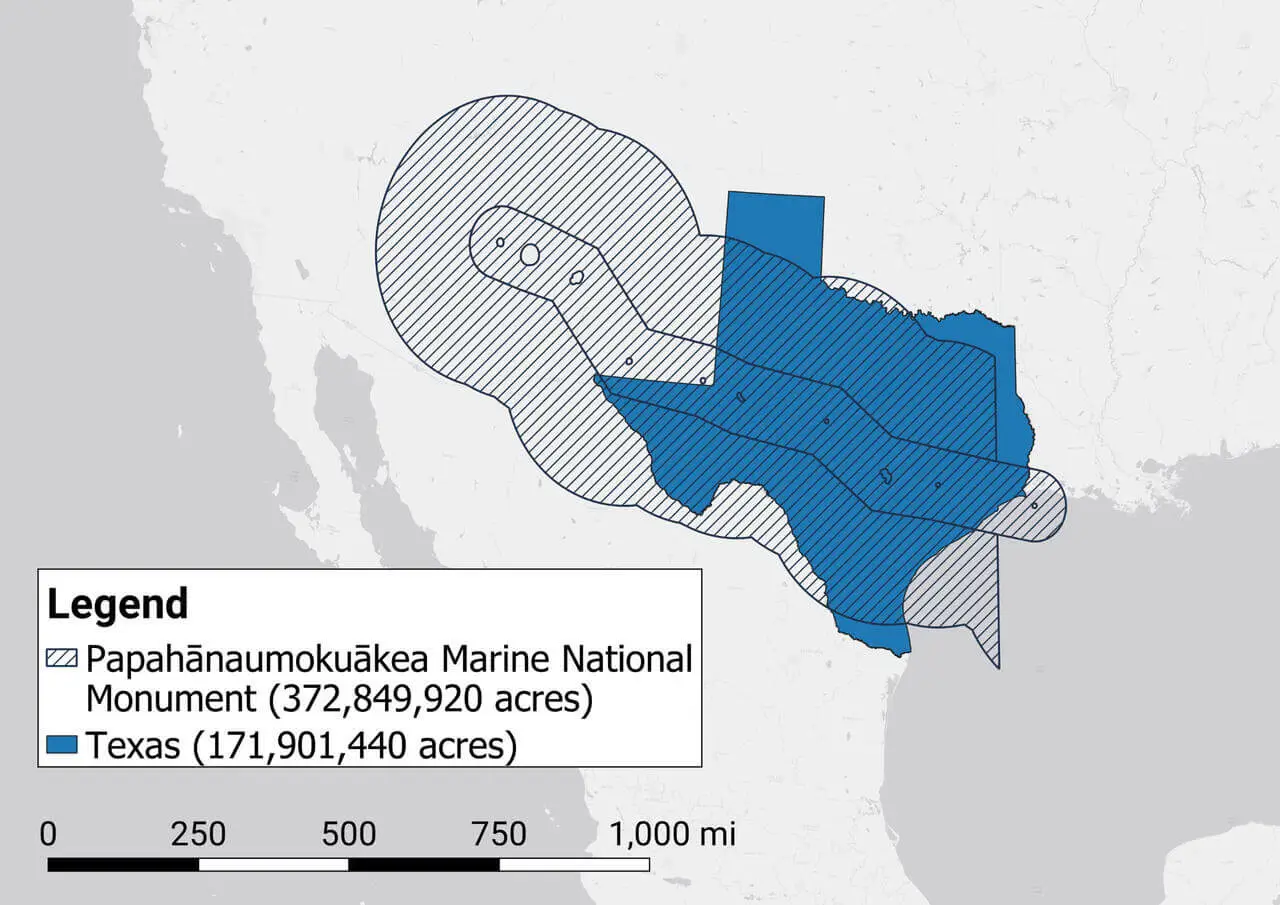
With the stroke of a pen, the president of the United States can cut off vast areas of federal land from all productive use. While Congress alone can designate national parks and wilderness areas, Congress has uniquely authorized the president to declare national monuments. Why did this happen?
By the late 1800s, historical and archaeological sites and objects west of the Mississippi River inspired not only professional archaeological interest but also private looting and destruction. To protect these “antiquities” as well as scientifically interesting natural features of the land, Congress passed the Antiquities Act in 1906. 1 National Park Service, U.S. Department of the Interior, “Antiquities Act of 1906,” last updated March 30, 2023, www.nps.gov/subjects/archeology/antiquities-act.htm.
The Antiquities Act gave the president authority to unilaterally identify and preserve antiquities on federal land:
Today, the federal government owns about 28 percent of all U.S. land—around 640 million acres. The U.S. Forest Service, Bureau of Land Management, Fish and Wildlife Service, and National Park Service manage most of that land. 3 Congressional Research Service, Federal Lands and Related Resources: Overview and Selected Issues for the 118th Congress (Washington, DC: Congressional Research Service, February 2023), https://crsreports.congress.gov/product/pdf/R/R43429. In the western United States, most lands are federally owned (see Figure 1) and potentially available for reservation under the Antiquities Act. For example, about 80% of land in Nevada is federally owned. 4 Congressional Research Service, Federal Land Ownership: Overview and Data (Washington, DC: Congressional Research Service, February 2020), https://sgp.fas.org/crs/misc/R42346.pdf.
Source: Congressional Research Service, Federal Land Ownership: Overview and Data (Washington, DC, Congressional Research Service, February 2020), https://sgp.fas.org/crs/misc/R42346.pdf
When a new archaeological site is discovered on federal land, or if a scientifically important feature of the land is threatened, the president can act quickly to protect it. But that is not how presidents apply the law today.
The primary intent of the Antiquities Act was to protect invaluable artifacts and sites of historic or scientific interest on federal lands. Initially, following the law, presidents established relatively small monument areas with boundaries carefully tailored to preserve specific objects. President Theodore Roosevelt set aside 1,153 acres to protect Devils Tower in Wyoming as the first national monument in 1906. Roosevelt believed this area “sufficiently large to provide for the proper care and management of the monument.” 5 National Park Service, U.S. Department of the Interior, “Early Conservationists,” June 4, 2022, www.nps.gov/deto/learn/historyculture/early-conservationists.htm.
Some national monuments are quite small, with boundaries drawn carefully around the antiquities they protect. In 2006, for example, President George W. Bush set aside approximately seven acres in New York City at the site of a historic African burial ground used from the 1690s to the 1790s. 6 George W. Bush, “Establishment of the African Burial Ground National Monument,” The White House February 27, 2006, https://georgewbush-whitehouse.archives.gov/news/releases/2006/02/20060227-6.html. In 2016, President Barack Obama designated 0.12 acres in the Greenwich Village neighborhood of New York City as Stonewall National Monument, marking the primary site of the historic Stonewall Uprising of 1969. 7 Barack Obama, “Presidential Proclamation—Establishment of the Stonewall National Monument,” The White House, June 24, 2016, https://obamawhitehouse.archives.gov/the-press-office/2016/06/24/presidential-proclamation-establishment-stonewall-national-monument.
Other monuments are large but still tailored to protect a specific object. For example, Roosevelt designated the Grand Canyon area as the Grand Canyon National Monument in 1908, setting aside 818,560 acres. 8 National Park Service, U.S. Department of the Interior, “The Proclamation of National Monuments under the Antiquities Act, 1906–1970,” March 6, 2023, https://www.nps.gov/articles/lee-story-proclamation.htm. The monument was created to protect what Roosevelt called an “object of unusual scientific interest”—the Grand Canyon. Yet the designation established a precedent for large monuments going forward.
Over time, presidents have vastly expanded their use of the Antiquities Act. While the Act was meant to protect specific artifacts and natural objects, modern administrations have increasingly used it to designate vast landscapes and entire ecosystems to build presidential legacies. 9 Pew Charitable Trusts, “New Ocean Monuments Give President Bush a Blue Legacy; Pew Applauds Historic Action,” January 5, 2009, https://www.pewtrusts.org/en/about/news-room/press-releases-and-statements/2009/01/05/new-ocean-monuments-give-president-bush-a-blue-legacy-pew-applauds-historic-action.
The open-ended definition of what constitutes an “object” has allowed presidents to use their power under the law as they see fit. In the 1970s, President Jimmy Carter set aside 56 million acres—nearly six times the acreage of all preceding presidents combined. 10 Carter designated 56,045,000 acres, whereas earlier presidents designated 9,607,702 acres combined. FiveThirtyEight, “FiveThirtyEight Antiquities Act Dataset,” Kaggle, accessed April 14, 2024, https://www.kaggle.com/datasets/fivethirtyeight/fivethirtyeight-antiquities-act-dataset. Since then, five presidents designated additional monuments or, in the case of President Donald Trump, reduced the designated area of monuments. 11 The five presidents were Biden, Trump, Obama, G. W. Bush, and Clinton. Congressional Research Service, National Monuments and the Antiquities Act (Washington, DC: Congressional Research Service, January 2024), https://sgp.fas.org/crs/misc/R41330.pdf. Figure 2 shows the cumulative acres designated as national monuments over time.
Source: FiveThirtyEight, “FiveThirtyEight Antiquities Act Dataset,” Kaggle, accessed April 14, 2024, https://www.kaggle.com/datasets/fivethirtyeight/fivethirtyeight-antiquities-act-dataset; Congressional Research Service, National Monuments and the Antiquities Act (Washington, DC: Congressional Research Service, January 2024), https://sgp.fas.org/crs/misc/R41330.pdf; Richard H. Seamon, “Dismantling Monuments,” Florida Law Review 70, no. 3 (2019): 553–600.
Several monuments designated since the late 20 th century encompass millions of acres. In fact, 90 percent of all acres designated under the Antiquities Act have been designated since 2000. 12 FiveThirtyEight, “FiveThirtyEight Antiquities Act Dataset.” As Figure 3 illustrates, some modern monuments are about as large or larger than entire U.S. states.
A. Bears Ears National Monument vs. Delaware

B. Ancestral Footprints National Monument vs. Rhode Island

C. Northeast Canyons and Seamounts Marine National Monument vs. Connecticut

D. Papahānaumokuākea Marine National Monument—twice as large as Texas

Source: United States Census Bureau, “State Area Measurements and Internal Point Coordinates,” accessed April 17, 2024, https://www.census.gov/geographies/reference-files/2010/geo/state-area.html; Bureau of Land Management, “Bears Ears National Monument Management,” accessed April 17, 2024, https://www.blm.gov/programs/national-conservation-lands/utah/bears-ears-national-monument; Bureau of Land Management, “Baaj Nwaavjo I’tah Kukveni-Ancestral Footprints of the Grand Canyon National Monument,” accessed April 17, 2024, https://www.blm.gov/national-conservation-lands/arizona/ancestral-footprints; National Oceanic and Atmospheric Administration, “Northeast Canyons and Seamounts Marine National Monument,” accessed April 17, 2024, https://www.fisheries.noaa.gov/new-england-mid-atlantic/habitat-conservation/northeast-canyons-and-seamounts-marine-national; National Oceanic and Atmospheric Administration, “Papahānaumokuākea Marine National Monument,” accessed April 17, 2024, https://www.fisheries.noaa.gov/pacific-islands/habitat-conservation/papahanaumokuakea-marine-national-monument.
Federal lands contain valuable resources including timber, minerals, and energy sources. Such resources are critical for supplying goods from agricultural products to lithium, which is used in renewable energy technology. In 2019, 22 percent of crude oil, 13 percent of natural gas, and 41 percent of coal produced in the United States came from federal lands. Renewable energy resources are also vast across the federal estate. In 2018, 40 percent of geothermal electricity capacity in the country was located on federal lands. Wind and solar production are increasing each year. 13 Congressional Research Service, Federal Lands and Related Resources.
Federal law requires that federal lands be used for the benefit of the public—not only through public access and recreation, but also through development of natural resources. The Federal Land Management Policy Act of 1976 established a mandate of “multiple use and sustained yield” for public land management. That means that in addition to protecting environmental values, agencies must ensure that “the public lands be managed in a manner which recognizes the Nation’s need for domestic sources of minerals, food, timber, and fiber from the public lands.” 14 Federal Land Management Policy Act of 1976, Pub. L. No. 94-579, 90 Stat. 2743 (1976), 43 U.S.C. § 1701 et seq.
Despite this mandate, presidential proclamations restrict the use of land within national monuments. Although designations typically respect existing leases for grazing and mining, they usually restrict future leases. 15 Congressional Research Service, National Monuments. Designations that restrict all development of natural resources conflict with the mandate of multiple use and sustained yield.
Lobbying by special interest groups plays a significant role in determining which uses are permitted within a national monument and where monuments are designated in the first place. In the case of the Bears Ears National Monument, groups including the Leonardo DiCaprio Foundation, the Wyss Foundation, and the Grand Canyon Trust spent more than $20 million on lobbying. 16 Amy Joi O’Donoghue, “Leonardo DiCaprio Foundation Writes a Check for Bears Ears ‘Engagement’ Fund,” Deseret News, January 12, 2017, https://www.deseret.com/2017/1/12/20603975/leonardo-dicaprio-foundation-writes-a-check-for-bears-ears-engagement-fund/.
Large monuments in the American West have often been controversial because the areas have significant natural resource potential. For example, Grand Staircase–Escalante National Monument in central Utah holds vast deposits of coal and oil sands. 17 Utah Geological Survey, “Resource Overview for the Original 1996 Grand Staircase–Escalante National Monument Designation and Vicinity” (March 2021), accessed April 14, 2024, https://geology.utah.gov/publication-details/?pub=PI-103. Additionally, the designation of Ancestral Footprints of the Grand Canyon National Monument by President Joe Biden in 2023 controversially locked up valuable uranium deposits that could help provide emission-free nuclear energy. 18 Bobby Magill, “Biden Protects Land by Grand Canyon but Will Still Allow Mining,” Bloomberg Law, August 8, 2023, https://news.bloomberglaw.com/environment-and-energy/bidens-grand-canyon-monument-declaration-wont-block-all-mining-1. Uranium is also a national-security resource. Currently, the United States gets most of its uranium from Russia and other former Soviet-bloc countries, and greater domestic production could reduce this dependence. 19 Donald Trump, “Memorandum on the Effect of Uranium Imports on the National Security and Establishment of the United States Nuclear Fuel Working Group,” The White House, July 12, 2019, https://trumpwhitehouse.archives.gov/presidential-actions/memorandum-effect-uranium-imports-national-security-establishment-united-states-nuclear-fuel-working-group/. Although the Ancestral Footprints designation honors existing mining claims, it prevents any new claims.
So long as presidents can unilaterally designate national monuments and determine which resources will be restricted, the Antiquities Act will continue to be controversial.